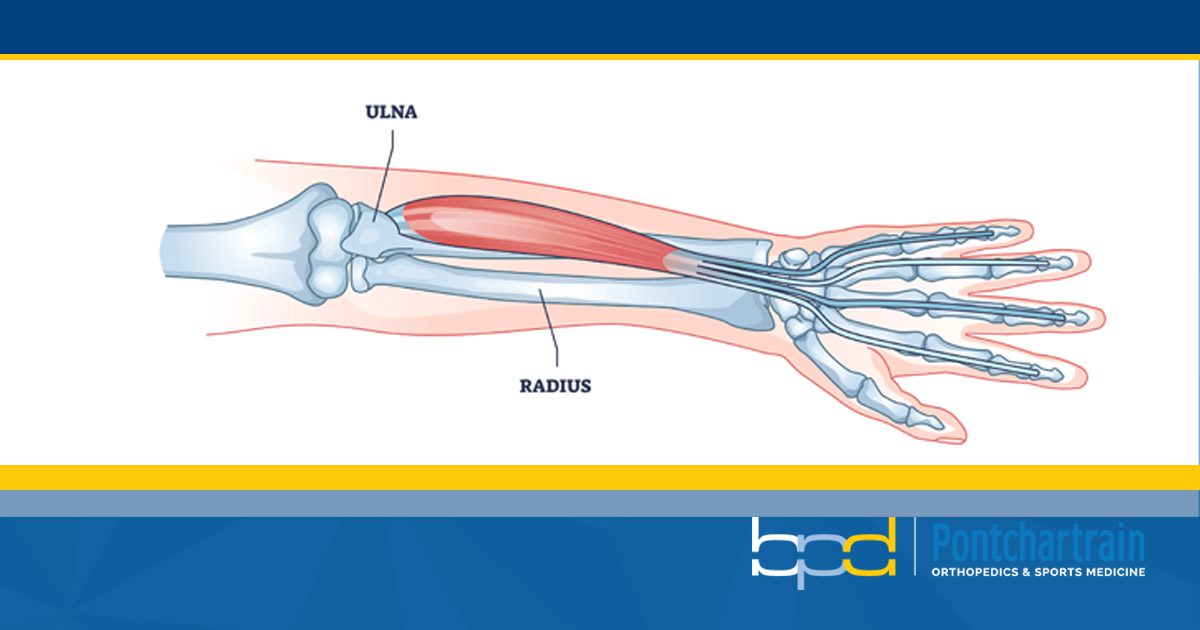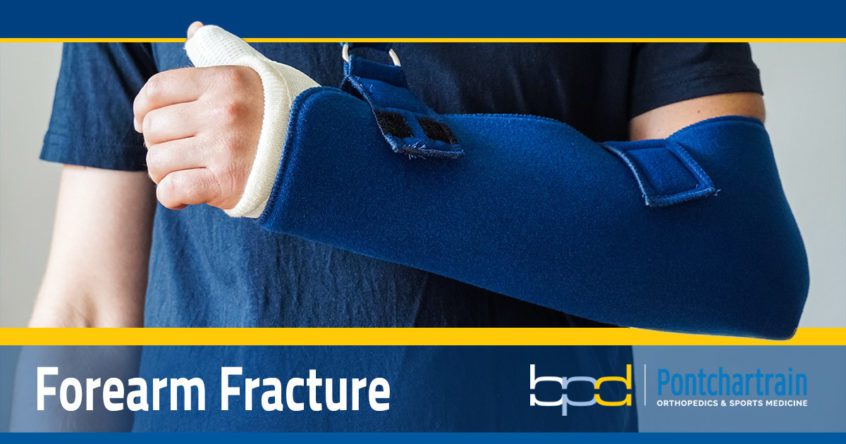What is a Forearm Fracture?
A forearm fracture, or broken forearm, occurs in the area between the elbow joint and the wrist. The forearm is made up of five muscles and two bones - the radius and ulna. The radius is located on the side of the forearm closest to the thumb. The forearm is primarily responsible for rotating itself, the wrist, and hand—turning the palm upwards and downwards. It also helps bend and straighten the elbow.

What Causes a Broken Forearm?
The bones of the forearm can be fractured by a direct blow, falling on an outstretched arm, and an impact sustained during a collision accident. In older patients, the fracture may be complicated by osteoporosis. In some cases, they are due to pathologic changes in the bone such as a bone cyst or bone tumor.
How are Forearm Fractures Diagnosed?
Dr. Donnelly will begin the diagnostic process with a physical exam. If he suspects a fracture, he may order diagnostic imaging like an x-ray or MRI to assess the severity of the break. Fractures are typically categorized based on the region in which they occur:
Treatment Options
Treatment will depend on the severity of the break. Because the bones of the forearm rely on each other for the support of the arm, it is important that the radius and the ulna are kept in proper alignment.
Non Surgical
In the case of minor fractures, treatment of forearm fractures consists of immobilization in a splint or cast. While immobilized, the fractured bone is able to heal.
Surgical
Most fractures of the forearm require surgery. The type of surgery will depend on the type of fracture sustained by the patient. More severe injuries may require the placement of metal screws and plates to facilitate proper healing
Recovery Time
Though most forearm fractures heal within about three to six months, more severe injuries may take longer to fully heal. Dr. Donnelly may prescribe NSAIDs and physical therapy to help aid the healing process and to ensure a return to normal use.

